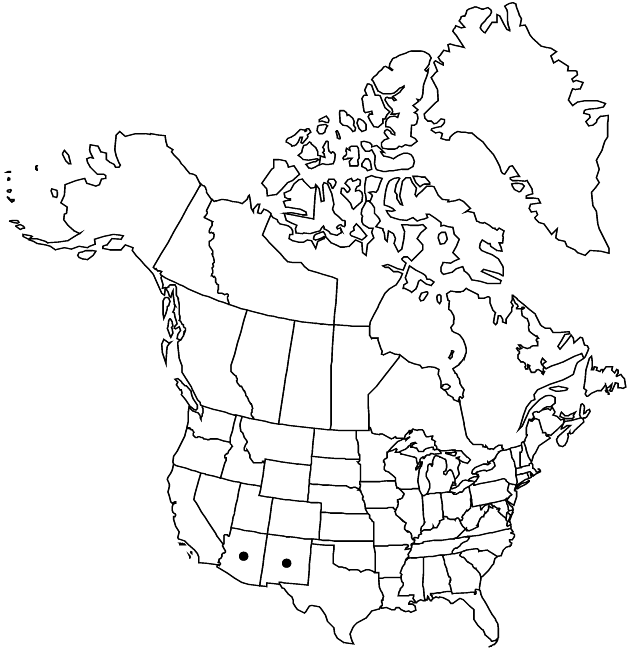Senecio actinella
Bull. Torrey Bot. Club 10: 87. 1883.
Perennials, (7–)20–30(–40+) cm (rhizomes exfoliating). Herbage densely lanate-tomentose, glabrescent (especially on adaxial faces of leaves). Stems single. Leaves mostly basal; petiolate; blades narrowly obovate, (2–)3–7(–10) × 1–2(–3+) cm, bases tapered, margins subentire to denticulate (cauline leaves bractlike). Heads 1(–3). Calyculi of (1–)5–8+ linear to filiform bractlets (lengths 1/3–3/4 phyllaries). Phyllaries ± 21, 8–12 mm, tips greenish (with white bristles). Ray florets ± 13; corolla laminae usually 8–10 mm (sometimes tubular, unexpanded, heads then perhaps technically disciform). Cypselae hairy.
Phenology: Flowering summer.
Habitat: In duff, rocky woodlands, especially in pine-dominated areas
Elevation: 2000–3000 m
Distribution

Ariz., N.Mex., Mexico (Chihuahua, Durango).
Discussion
Plants of Senecio actinella with relatively small proximal leaves similar to basal leaves and adaxial leaf faces early glabrate have been recognized as var. mogollonicus; the distinction is difficult to maintain. Receptacles in Senecio actinella are sometimes insect-infested.
Selected References
None.